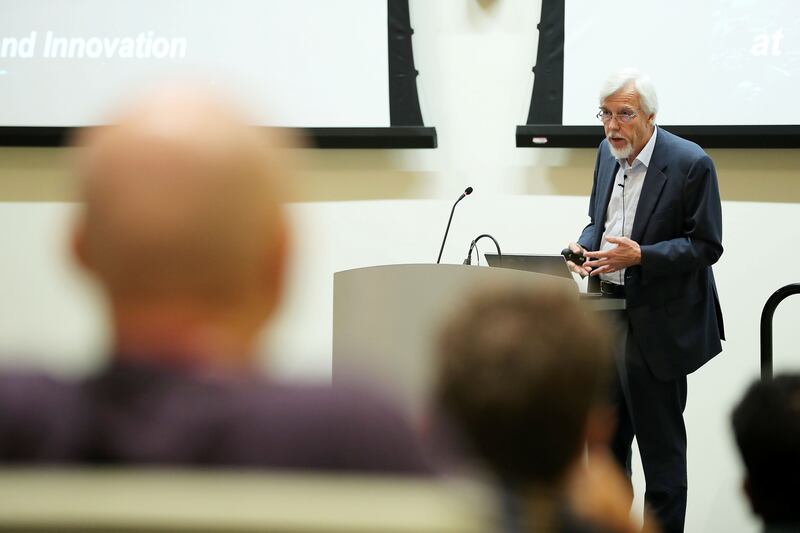A microscope so powerful it can distinguish cancerous cells from healthy ones is at the disposal of a group of scientists from across the Middle East, Europe and Asia and based in Amman.
Working out of Sesame, a facility that opened in the Jordanian capital in May, the international team – equipped with the microscope - are collaborating to solve major global issues across a host of fields.
“This will help better understand the difference between normal and cancer cells through investigating them,” said Dr Rolf Heuer, former director of the European Organisation for Nuclear Research (Cern), which yielded three Nobel prizes and some of the largest science projects undertaken by mankind.
"Once you know that, you can look into the development of such cells by looking at the intermediate nature of such samples. That will allow better medical information, you can in the long-term look into medication and see [how] such a medication inhibits the growth or modification of such cells."
Although there are 60 similar facilities globally, Sesame is the first in the Middle East.
“All of them have long waiting lines for experiments,” said Francesco Arneodo, associate dean of science and associate professor of physics at New York University – Abu Dhabi. “So whenever you develop a new material, the ideal place to go is there. You might do your first experiments in your lab but when you want to go really deep and have much more resolution of your images, for instance for a molecule, then you need this.”
Read more: Middle East scientists beaming over new research
The microscope allows for extremely precise resolution of images.
"This is really the way to go for imaging in the medical field for instance, like with breast cancer," he said. "You can reach resolutions of images that you couldn't reach in other ways, it's much more precise than standard X-rays and it has wave lengths that range from infrared to X-rays so it's a really powerful technique."
Based on Cern's concept, the facility is the highest energy accelerator in the Middle East.
"The role of science is to innovate, discover, publish and share," Dr Heuer said during a lecture on Sesame at the university this week. "It's also competition and collaboration. Science is getting more and more global and 50 years after Cern, Sesame was conceived to enable the construction of a facility for a broad range of scientific research beyond the means of individual members and foster cooperation between people."
With the hope that the UAE will come onboard, the aim is to encourage regional scientists to work together.
"You have a very wide field of research with which you can attract brilliant minds in the medical, chemistry fields and others so you're not restricted to one science field," Dr Heuer said. "You have to prepare for an oil-free future. The oil will reach an end so where can you put your cards on is the human brain. That's the future."
Independent of the research, he said young minds would be trained. "You need something which the young people are interested in and find fascinating," he said. "It educates them too and if you have it in the region, it's easier than going abroad."
Scientists are also researching the best method for the storage and carbon-free release of hydrogen, soil contamination, tracking pollution, analysing food content and contamination sources.
"Scientists will typically go to Sesame two to three times a year for a few days to carry out experiments in collaboration with scientists from other institutions and countries," Dr Heuer said. "The UAE at the very beginning was very interested but then it depends on the scientists. I would hope it might become interested again because it's a facility that the universities here could use and there are some experiments that could be done in the Gulf."
In cultural heritage, archaeology, arts history and preservation, the system will allow researchers to take an in-depth look into paintings and help art historians certify authenticity. "Archaeology is interesting for the Middle East because it has huge fantastic history," Dr Heuer said.
Mr Aneodo said he hoped the lecture would encourage students to pursue sciences so that the UAE might one day might be involved in Sesame.
“One of the reasons I asked Dr Heuer to come is to raise some interest in the local community because it would make sense that the UAE as a country in the region would join this venture,” Mr Arneodo said.
“There are political challenges because it’s a consortium in which you have entities that do not talk to each other but it’s also the beauty of science because it transcends all that. As in Europe 60 years ago, some countries did not talk to each other but they did when they talked science so we’re hoping history will repeat itself because having a transnational entity which is only concerned with good science can help.”






